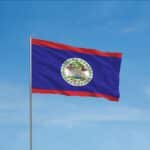Daylight Saving Time Starts, observed on March 12 this year, is the practice of advancing the clocks by one hour from Standard Time during the summer months and reverting the clocks to Standard Time in the autumn. The fundamental concept is that doing so will help us all to create better use of natural daylight: putting the clocks forward one hour in the spring will give us more daylight during summer nights while changing the clocks back one hour in the fall would give us more daylight during winter mornings. Thus, Daylight Saving Time helps us save energy and reduce costs.
History of Daylight Saving Time Starts
Benjamin Franklin came up with the notion of resetting clocks in the summer to save electricity. People could use the extra evening daylight instead of wasting energy on illumination by setting the clocks forward. Announcing his ‘finding’ that the sun delivers light as soon as it rises, Franklin penned a humorous letter to the “Journal de Paris” in 1784.But it was William Willet, an Englishman, the first true proponent of Daylight Saving Time. It came to him early one morning in 1907 while riding his horse. Despite the rising sun, he noted that many houses’ shutters were tightly sealed. Every four Sundays in April and September, Willet spent tens of thousands of dollars pushing businessmen, politicians, and members of the U.S. Congress to move forward 20 minutes. But his plan was largely mocked. The practice was condemned as a sin by one group.Years later, Daylight Saving Time was finally implemented. During World War I, Germany instituted Daylight Saving Time in May 1916. Soon after, the rest of Europe joined in. So did the U.S. in 1918. President Woodrow Wilson wanted to preserve Daylight Saving Time after W.W.I. ended, in part, because farmers would lose an hour of morning light. Until the next war, Daylight Saving Time was eliminated. Roosevelt declared ‘War Time’ on February 9, 1942, when the war began.Daylight Saving Time was implemented in all U.S. states and towns after W.W.I.I., causing confusion. That’s why Congress passed the Uniform Time Act in 1966 to control the ‘Wild West.’ Daylight Saving Time began on the first Sunday in April and ended on the last Sunday in October under federal legislation. With the Energy Policy Act of 2005, Daylight Saving Time was extended to the present time in 2007.
Daylight Saving Time Starts timeline
The United States begins using Daylight Saving Time.
Congress approves the Uniform Time Act, which mandates that Daylight Saving Time be observed throughout the United States.
By signing into law the Energy Policy Act, Congress creates Daylight Saving Time.
The Energy Policy Act goes into effect.
Daylight Saving Time Starts FAQs
Is Daylight Saving Time a good time to check our smoke detector batteries?
Changing the time every two years serves as a helpful reminder to replace the batteries in smoke detectors, which should be done at least twice a year. Replace the batteries in your smoke detectors on Daylight Saving Time.
Is Daylight Saving Time truly giving us an hour of extra sleep or taking it away from us completely?
When the sun rises and sets on our watches, nothing changes. Because of this, the day does not get longer or shorter in actuality. It does not matter what Congress decides, our clocks must still be set to 24 hours to keep the Earth’s axis spinning. (Actually, little more than 24 hours, which is why we have a leap year every four years.)
Is Daylight Saving Time good for your health?
During a year, there are two-time adjustments due to Daylight Saving Time. These time shifts harm our sleep patterns, circadian rhythm, and more.
Daylight Saving Time Starts Activities
-
Advance the clock
For Daylight Saving Time Starts, gather your family members and all the clocks in your home and change the time by an hour. You can reward your clock assistants for setting the time by giving them a treat, such as cookies.
-
Countdown to Daylight Saving Time with a party
This is a terrific reason to gather your friends together and throw a party. Just like on New Year's Eve, you and your companions can remain up late and keep track of the passing seconds.
-
Dispose of your winter wear
Pull out all of your winter clothing from your closet. Donate or give away as much of it as possible, and pack the rest aside for safekeeping until next year. Having a fully-stocked spring wardrobe is sure to lift your spirits and get you pumped for the season.
5 Places Daylight Saving Time Occurs
-
Canada
Daylight Saving Time is observed in nine of Canada's 10 provinces with some sections of British Columbia, Saskatchewan, Northwest Ontario, and eastern Quebec being among the provinces and territories in Canada that observe standard time throughout the year.
-
United States
Only a few states, including Hawaii and Arizona, observe Daylight Saving Time at different times of the year.
-
Europe
Except for Russia, Iceland, and Belarus, most European countries observe Daylight Saving Time.
-
Australia
Because Australia is such a large country, it does not observe Daylight Saving Time uniformly: New South Wales, Victoria, South Australia, Tasmania, and the Australian Capital Territory do observe Daylight Saving Time, while Queensland and the Northern Territory (Western Australia) do not observe it.
-
Southern Africa
Southern Africa set their clocks forward an hour in observance of Daylight Saving Time.
Why We Love Daylight Saving Time Starts
-
It reduces accidents
According to studies, Daylight Saving Time helps to enhance road safety by lowering the number of pedestrian fatalities during the dawn and evening hours. It also lowers the rate of car accidents that occur.
-
It results in reduced robberies
Daylight Saving Time promotes safety. A study discovered a decrease in robberies following the springtime changeover to Daylight Saving Time.
-
More time for recreational activities
As a result, when we move our clocks forward an hour in the spring, we gain an extra hour of natural daylight in the afternoon. Proponents of Daylight Saving Time believe that longer evenings encourage people to go out of their homes. Outdoor activities, such as golf, soccer, baseball, running, and other sports might benefit from the extra hour of daylight.
Daylight Saving Time Starts dates
| Year | Date | Day |
|---|---|---|
| 2022 | March 13 | Sunday |
| 2023 | March 12 | Sunday |
| 2024 | March 10 | Sunday |
| 2025 | March 9 | Sunday |
| 2026 | March 8 | Sunday |


























